The attitude of most heritage conservationists with regard to temples leaves a lot to be desired as these marvels struggle to survive.
Why we need a Heritage Tribunal
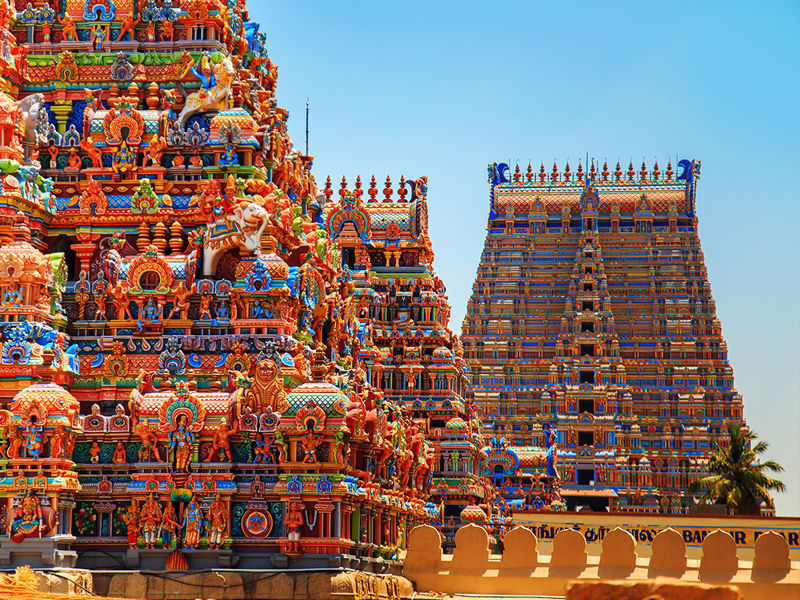
The Kashi corridor project has opened our eyes with regards to how essential it is to have a body that understands heritage and the importance of its conservation.
How an expert body can be helpful is evident in the restoration project undertaken in the Ranganathaswamy temple, Srirangam, Trichy. A few decades ago the Srirangam temple complex saw renovation work that actually marred the beauty of the heritage structures. Concrete floors, barriers, railings, platforms, walls, and even water tanks were constructed haphazardly. The TVS Trust took up the restoration and conservation work with heritage experts and restored the complex to its original glory. The Hindu Religious and Charitable Endowments Department appointed M/s Indian Culture Heritage Trust and the Venugopalswamy Trust, Chennai as the principal agency to undertake the massive conservation project. The results are commendable.
Some ‘Before and After’ photos to help understand the effects of the task undertaken. (Pics taken from the book Sri Ranganathaswamy Temple, Preserving Antiquity for Posterity).
Restoration of the Sri Venugopalan Sannidhi
Before Restoration:
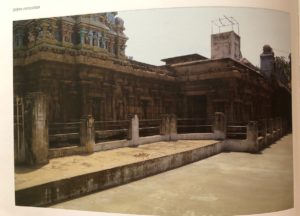
After restoration:
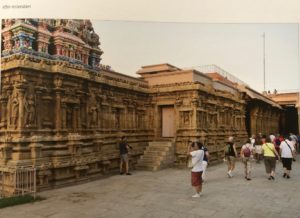
The Landscaping has been tastefully done in the vacant areas alongside the removal of harmful structural additions done in the recent past.
Restoration of the Sri Chakkarathalwar Sannidhi.
Before Restoration:
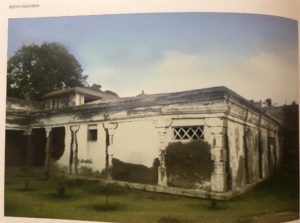
After Restoration:
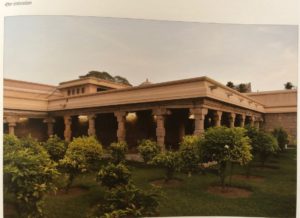
The above is an example of positive work. Now I will like to highlight some negatives;
The effort put in by the ASI in the Kailasanathar Temple, Kanchipuram to restore sculptures has not been successful. This temple was built in the first quarter of the 8th Century by the Pallava ruler Narasimhavaram II. It is the crowning glory of Pallava architecture.
The sculptures and murals are fading due to time and weather. The original work is striking and difficult to replicate. The restoration work undertaken by ASI was done with good intentions but has proven to be uninspiring and actually covers up the beauty of the original work.
A picture of a wall sculpture.
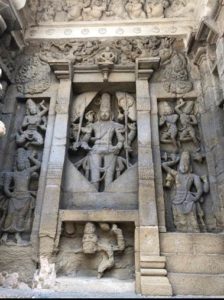
A picture of an area of the wall over which renovation work was undertaken. The plaster tends to cover up the original artwork.
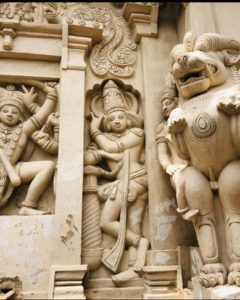
Even good intentions have failed because the usual restoration techniques have not yielded the desired results.
There are some simple and doable tasks that have been neglected by temple/heritage authorities. For example the temple at Narthamalai in Pudukottai district of Tamil Nadu- Vijayalaya Choliswara is a beautiful temple dedicated to Shiva that stands on a rocky hill called Narthamalai. Narthamalai overlooks a beautiful pond and verdant greenery of paddy fields in its surroundings. Climbing this hill across the sloping rock face is not easy. This is said to be one of the earliest examples of transitional architecture (from Pallava to Pandya to Chola) that in future gave rise to the majestic Chola constructs.
This is a well-planned temple, built in nature’s verdant glory and yet it has been left bereft of any daily pujas and rituals associated with Shiva, the prime deity. There is a consecrated Shivlinga in the sanctum sanctorum and yet only bats are found there.
There are inscriptions on the temple front and nearby rock slope near a water storage area that reveals some history about the temple and the rulers of the area. The inscriptions on the floor are barely visible due to weathering.
The authorities in charge of this temple could have taken measures to cover the floor inscriptions in order to preserve it. The authorities can ensure that steps are cut into the slippery rock face so that the climb for humans is risk-free. Bats can be removed from the interiors of the garbhgriha. After all, this is not a random cave but a temple that is an architectural marvel and home to Shiva.
More needs to be done to not only preserve our past glory but also to continue with the age-old traditions that assist in maintaining temples and temple property.
Another example is the Rajarani Temple in Bhubaneswar. The temple is dated to 1000 CE. This temple is a masterpiece in refinement in architectural construction and finery in the carvings. The sanctum of this temple is empty but the most probable deity was Shiva based on the carvings depicting Shiva and Parvati, Lakulisa of the Pashupata Shaivite sect and the Shaiva Dwarpalas at the entrance. This is not a functioning temple and the only inhabitants inside the garbhgriha are bats. Why? One is scared to take pictures of the beautiful inner roof carvings due to the presence of bats as bat excreta can be fatal if it enters the eyes or fluid system of a human.
Why can’t the management ensure clean interiors?
It seems that people associated with heritage management have a lackadaisical attitude towards the upkeep of the sites and therefore an expert body is required to provide technical support and guidance.
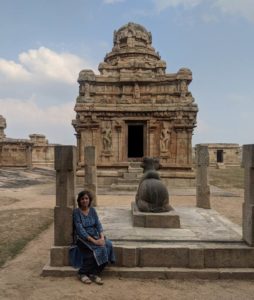
(Vijayalaya Choliswara at Narthamalai)

Leave a Reply